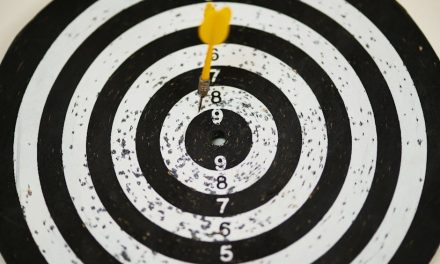Table of Contents
“Unlock your full potential with a personalized roadmap to success.”
Introduction
A personal development plan is a strategic roadmap that helps individuals identify their goals, assess their current skills and abilities, and outline steps to achieve personal and professional growth. In the context of a career, a personal development plan can be a valuable tool to enhance skills, expand knowledge, and advance in one’s chosen field. This article will provide a step-by-step guide on how to build a personal development plan for your career, enabling you to set clear objectives, track progress, and ultimately achieve your professional aspirations.
Setting Clear Goals for Personal Growth

Setting Clear Goals for Personal Growth
In order to achieve personal growth and advance in your career, it is essential to have a clear plan in place. This plan, known as a personal development plan, serves as a roadmap to guide you towards your goals and aspirations. By setting clear goals for personal growth, you can identify the areas you need to work on and take the necessary steps to improve yourself.
The first step in building a personal development plan is to identify your long-term career goals. What do you want to achieve in your career? Do you aspire to reach a certain position or level of responsibility? By clearly defining your long-term goals, you can then break them down into smaller, more manageable short-term goals.
Once you have identified your long-term goals, it is important to set specific and measurable short-term goals. These goals should be realistic and achievable within a certain timeframe. For example, if your long-term goal is to become a manager, a short-term goal could be to complete a leadership training program within the next six months.
In addition to setting goals related to your career, it is also important to set goals for personal growth. This could include improving your communication skills, developing your leadership abilities, or enhancing your problem-solving skills. By setting goals in these areas, you can become a well-rounded professional and increase your chances of success in your career.
When setting goals, it is important to make them SMART – specific, measurable, achievable, relevant, and time-bound. Specific goals are clear and well-defined, while measurable goals can be tracked and evaluated. Achievable goals are realistic and within your reach, while relevant goals are aligned with your long-term objectives. Finally, time-bound goals have a specific deadline or timeframe attached to them.
Once you have set your goals, it is important to develop a plan of action to achieve them. This plan should outline the steps you need to take in order to reach your goals. For example, if your goal is to improve your communication skills, your plan of action could include taking a public speaking course, practicing active listening, and seeking feedback from colleagues.
In addition to developing a plan of action, it is also important to regularly review and evaluate your progress. This will help you stay on track and make any necessary adjustments to your plan. By regularly assessing your progress, you can identify any areas where you may be falling behind and take corrective action.
Finally, it is important to stay motivated and committed to your personal development plan. Building a successful career and achieving personal growth takes time and effort. There may be setbacks along the way, but it is important to stay focused on your goals and persevere. Surround yourself with supportive individuals who can provide guidance and encouragement.
In conclusion, setting clear goals for personal growth is an essential step in building a personal development plan for your career. By identifying your long-term goals, setting specific and measurable short-term goals, and developing a plan of action, you can take the necessary steps to improve yourself and advance in your career. Remember to regularly review and evaluate your progress, and stay motivated and committed to your goals. With a clear plan in place, you can achieve personal growth and reach your career aspirations.
Identifying Strengths and Weaknesses for Professional Development
A personal development plan is a crucial tool for anyone looking to advance their career. It helps individuals identify their strengths and weaknesses, set goals, and create a roadmap for professional growth. In this section, we will explore the importance of identifying strengths and weaknesses for professional development and provide some strategies to help you assess your own.
Understanding your strengths is essential for career development. By recognizing what you excel at, you can leverage those skills to achieve success in your chosen field. Strengths can include technical expertise, communication skills, problem-solving abilities, or leadership qualities. Identifying these strengths allows you to focus on areas where you can make the most significant impact and contribute value to your organization.
On the other hand, acknowledging your weaknesses is equally important. Weaknesses are areas where you may lack proficiency or struggle to perform at your best. It could be a lack of knowledge in a particular subject, difficulty managing time effectively, or a tendency to avoid conflict. Recognizing these weaknesses is the first step towards improvement. By addressing and working on your weaknesses, you can enhance your overall professional competence.
To identify your strengths and weaknesses, start by conducting a self-assessment. Reflect on your past experiences, both in your personal and professional life. Consider the tasks or projects that you have excelled in and those that have presented challenges. Ask yourself what skills or qualities you possess that have contributed to your success, and what areas you need to improve upon.
Seeking feedback from others is another valuable method for identifying strengths and weaknesses. Reach out to colleagues, supervisors, or mentors who can provide objective insights into your performance. They may have observed skills or qualities in you that you were not aware of, or they may offer constructive criticism that can help you identify areas for improvement.
Additionally, consider utilizing assessment tools or personality tests that can provide further insights into your strengths and weaknesses. These tools can offer a more objective perspective and help you gain a deeper understanding of your professional profile.
Once you have identified your strengths and weaknesses, it is essential to prioritize them. Focus on the strengths that align with your career goals and can contribute to your success. Determine how you can further develop and leverage these strengths to advance in your chosen field.
Simultaneously, create a plan to address your weaknesses. Break down each weakness into smaller, manageable tasks that you can work on gradually. Seek out opportunities for professional development, such as workshops, courses, or mentoring programs, that can help you improve in these areas. Remember that personal growth is a continuous process, and it takes time and effort to overcome weaknesses.
In conclusion, identifying strengths and weaknesses is a crucial step in building a personal development plan for your career. By recognizing your strengths, you can leverage them to achieve success, while acknowledging your weaknesses allows you to work on areas that need improvement. Conducting a self-assessment, seeking feedback from others, and utilizing assessment tools can help you gain a comprehensive understanding of your professional profile. Prioritize your strengths and create a plan to develop and leverage them, while also addressing your weaknesses through targeted efforts. With a well-rounded personal development plan, you can chart a path towards professional growth and achieve your career goals.
Creating a Roadmap for Skill Enhancement and Learning
Creating a Roadmap for Skill Enhancement and Learning
In today’s competitive job market, it is essential to continuously develop and enhance your skills to stay ahead. A personal development plan is a valuable tool that can help you identify your strengths and weaknesses, set goals, and create a roadmap for skill enhancement and learning. By following a structured approach, you can ensure that you are making progress towards your career objectives.
The first step in creating a personal development plan is to assess your current skills and knowledge. Take the time to reflect on your strengths and weaknesses, and identify areas where you would like to improve. This self-assessment will provide you with a clear understanding of where you stand and what areas you need to focus on.
Once you have identified your areas for improvement, it is important to set specific and measurable goals. These goals should be aligned with your long-term career objectives and should be challenging yet achievable. For example, if you are looking to advance in your current role, you may set a goal to improve your leadership skills by attending a leadership training program.
After setting your goals, it is crucial to create a plan of action. Break down your goals into smaller, manageable tasks that you can work on regularly. This will help you stay focused and motivated as you make progress towards your objectives. For instance, if your goal is to improve your public speaking skills, you may plan to join a toastmasters club and practice speaking in front of a group regularly.
In addition to setting goals and creating a plan, it is important to seek out opportunities for learning and skill enhancement. This can include attending workshops, seminars, or conferences related to your field, enrolling in online courses, or seeking mentorship from experienced professionals. By actively seeking out these opportunities, you can stay up-to-date with the latest industry trends and acquire new knowledge and skills.
Furthermore, it is essential to regularly review and evaluate your progress. Set aside time every few months to assess how far you have come and whether you are on track to achieve your goals. This self-reflection will help you identify any areas where you may need to adjust your plan or seek additional support.
As you work towards your goals, it is important to stay motivated and maintain a positive mindset. Building new skills and knowledge takes time and effort, and setbacks are inevitable. However, by staying focused on your long-term objectives and celebrating small wins along the way, you can stay motivated and overcome any challenges that come your way.
In conclusion, creating a personal development plan is a crucial step in building a successful career. By assessing your current skills, setting specific goals, creating a plan of action, seeking out learning opportunities, and regularly reviewing your progress, you can create a roadmap for skill enhancement and learning. Remember to stay motivated and maintain a positive mindset as you work towards your goals. With dedication and perseverance, you can achieve your career objectives and thrive in today’s competitive job market.
Implementing Strategies for Continuous Career Progression
Implementing Strategies for Continuous Career Progression
Once you have identified your career goals and assessed your current skills and strengths, it is time to develop a plan to achieve continuous career progression. A personal development plan is a roadmap that outlines the steps you need to take to reach your career objectives. By implementing strategies for continuous career progression, you can ensure that you are constantly growing and advancing in your chosen field.
One of the first steps in implementing a personal development plan is to set specific and measurable goals. These goals should be aligned with your long-term career objectives and should be challenging yet attainable. By setting clear goals, you can focus your efforts and track your progress over time. For example, if your goal is to become a manager within the next five years, you can break it down into smaller milestones, such as completing a leadership training program within the next year.
Once you have set your goals, it is important to identify the skills and knowledge you need to develop in order to achieve them. This may involve conducting research, talking to industry professionals, or seeking feedback from your current supervisor. By identifying the specific skills and knowledge gaps, you can create a plan to acquire them. This may involve enrolling in courses, attending workshops or conferences, or seeking mentorship opportunities.
In addition to acquiring new skills and knowledge, it is also important to continuously improve your existing skills. This can be done through practice, seeking feedback, and staying up-to-date with industry trends and best practices. By continuously improving your skills, you can stay competitive in the job market and increase your chances of career advancement.
Networking is another crucial strategy for continuous career progression. Building a strong professional network can provide you with valuable connections, opportunities, and insights into your industry. Attend industry events, join professional organizations, and connect with colleagues and mentors to expand your network. By nurturing these relationships, you can gain access to new job opportunities, receive guidance and support, and stay informed about industry trends.
Another important aspect of implementing strategies for continuous career progression is seeking feedback and self-reflection. Regularly evaluate your progress towards your goals and seek feedback from supervisors, colleagues, and mentors. This feedback can help you identify areas for improvement and make necessary adjustments to your personal development plan. Additionally, take time for self-reflection to assess your strengths, weaknesses, and areas of interest. This self-awareness can guide your career decisions and help you align your personal development plan with your passions and values.
Finally, it is important to regularly review and update your personal development plan. As you progress in your career and gain new experiences, your goals and priorities may change. By regularly reviewing and updating your plan, you can ensure that it remains relevant and aligned with your current career objectives. This will help you stay focused and motivated as you continue to pursue continuous career progression.
In conclusion, implementing strategies for continuous career progression is essential for personal and professional growth. By setting specific goals, identifying skills and knowledge gaps, continuously improving existing skills, networking, seeking feedback, and regularly reviewing and updating your personal development plan, you can ensure that you are constantly advancing in your career. Remember, career progression is a journey, and by implementing these strategies, you can navigate that journey with purpose and success.
Q&A
1. What is a personal development plan for your career?
A personal development plan for your career is a structured roadmap that outlines your goals, skills, and actions needed to achieve professional growth and success.
2. Why is it important to have a personal development plan for your career?
Having a personal development plan for your career helps you identify your strengths and weaknesses, set clear goals, and take proactive steps towards achieving them. It also enhances your self-awareness, boosts motivation, and increases your chances of career advancement.
3. How can you build a personal development plan for your career?
To build a personal development plan for your career, start by assessing your current skills, strengths, and areas for improvement. Set specific and measurable goals, and identify the actions and resources needed to achieve them. Regularly review and update your plan to stay on track and adapt to changing circumstances.
4. What are some key components of a personal development plan for your career?
Key components of a personal development plan for your career include setting SMART (Specific, Measurable, Achievable, Relevant, Time-bound) goals, identifying relevant skills and knowledge to acquire, outlining action steps and timelines, seeking feedback and mentorship, and regularly reviewing and adjusting the plan as needed.
Conclusion
In conclusion, building a personal development plan for your career involves setting clear goals, identifying areas for improvement, creating a timeline, seeking feedback and support, and regularly reviewing and adjusting the plan. By following these steps, individuals can effectively enhance their skills, knowledge, and abilities, ultimately leading to personal and professional growth in their chosen career path.






Recent Comments